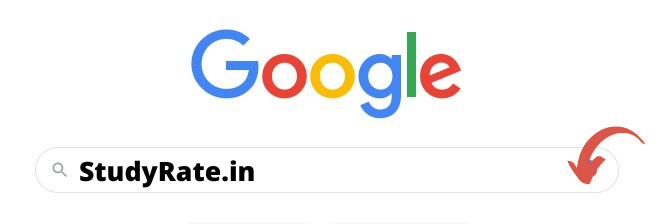Welcome to our comprehensive guide to “Assertion-Reason Questions for Class 12 Physics PDF Download“. This article is a rich resource designed to help students optimize their study routines and excel in their physics exams. Our goal is to assist you in mastering the concept of assertion-reason questions, a pivotal aspect of Class 12 Physics Assertion Reason Questions.
Join our Telegram Channel, there you will get various e-books for CBSE 2024 Boards exams for Class 9th, 10th, 11th, and 12th.
Assertion-Reason Questions for Class 12 Physics PDF Download
What are Assertion-Reason Questions?
Assertion-Reason questions are a unique type of question wherein you are presented with two statements: the assertion, which is a statement you must assume to be true, and the reason, which supposedly explains the assertion. Your task is to identify the correctness of these statements and their logical relationship. These questions help evaluate your understanding of a concept and your analytical skills
Importance of Assertion-Reason Questions in Class 12 Physics
Class 12 Physics covers several advanced concepts which require critical thinking skills. Assertion-reason questions help students delve deeper into these topics and understand them from a fundamental perspective. Hence, mastering these questions can significantly boost your final score.
Class 12 Physics Assertion Reason Questions Board Exams
- Assertion and Reason Questions on class 12 Physics Chapter 1 Electric Charges And Fields
- Assertion and Reason Questions on class 12 Physics Chapter 2 Electrostatic Potential And Capacitance
- Assertion and Reason Questions on class 12 Physics Chapter 3 Current Electricity
- Assertion and Reason Questions on class 12 Physics Chapter 4 Moving Charges And Magnetism
- Assertion and Reason Questions on class 12 Physics Chapter 5 Magnetism And Matter
- Assertion and Reason Questions on class 12 Physics Chapter 6 Electromagnetic Induction
- Assertion and Reason Questions on class 12 Physics Chapter 7 Alternating Current
- Assertion and Reason Questions on class 12 Physics Chapter 8 Electromagnetic waves
- Assertion and Reason Questions on class 12 Physics Chapter 9 Ray Optics and Optical Instruments
- Assertion and Reason Questions on class 12 Physics Chapter 10 Wave Optics
- Assertion and Reason Questions on class 12 Physics Chapter 11 Dual Nature of Matter and Radiation
- Assertion and Reason Questions on class 12 Physics Chapter 12 Atoms
- Assertion and Reason Questions on class 12 Physics Chapter 13 Nuclei
- Assertion and Reason Questions on class 12 Physics Chapter 14 Semiconductor Electronics
Mastering assertion-reason questions can give you an edge in your Class 12 Physics exam. With our PDF downloads, you’ll have a reliable study resource to assist in your preparation. Invest time in understanding and practicing these questions, and you’re sure to see an improvement in your physics comprehension and test performance.
Class 12 Physics Syllabus 2024
Chapter–1: Electric Charges and Fields
Electric charges, Conservation of charge, Coulomb’s law-force between two point charges, forces between multiple charges; superposition principle and continuous charge distribution.
Electric field, electric field due to a point charge, electric field lines, electric dipole, electric field due to a dipole, torque on a dipole in uniform electric field.
Electric flux, statement of Gauss’s theorem and its applications to find field due to infinitely long straight wire, uniformly charged infinite plane sheet and uniformly charged thin spherical shell (field inside and outside).
Chapter–2: Electrostatic Potential and Capacitance
Electric potential, potential difference, electric potential due to a point charge, a dipole and system of charges; equipotential surfaces, electrical potential energy of a system of two-point charges and of electric dipole in an electrostatic field.
Conductors and insulators, free charges and bound charges inside a conductor. Dielectrics and electric polarization, capacitors and capacitance, combination of capacitors in series and in parallel, capacitance of a parallel plate capacitor with and without dielectric medium between the plates, energy stored in a capacitor (no derivation, formulae only).
Chapter–3: Current Electricity
Electric current, flow of electric charges in a metallic conductor, drift velocity, mobility and their relation with electric current; Ohm’s law, V-I characteristics (linear and non-linear), electrical energy and power, electrical resistivity and conductivity, temperature dependence of resistance, Internal resistance of a cell, potential difference and emf of a cell, combination of cells in series and in parallel, Kirchhoff’s rules, Wheatstone bridge.
Chapter–4: Moving Charges and Magnetism
Concept of magnetic field, Oersted’s experiment.
Biot – Savart law and its application to current carrying circular loop.
Ampere’s law and its applications to infinitely long straight wire. Straight solenoid (only qualitative treatment), force on a moving charge in uniform magnetic and electric fields.
Force on a current-carrying conductor in a uniform magnetic field, force between two parallel current-carrying conductors-definition of ampere, torque experienced by a current loop in uniform magnetic field; Current loop as a magnetic dipole and its magnetic dipole moment, moving coil galvanometerits current sensitivity and conversion to ammeter and voltmeter.
Chapter–5: Magnetism and Matter
Bar magnet, bar magnet as an equivalent solenoid (qualitative treatment only), magnetic field intensity due to a magnetic dipole (bar magnet) along its axis and perpendicular to its axis (qualitative treatment only), torque on a magnetic dipole (bar magnet) in a uniform magnetic field (qualitative treatment only), magnetic field lines.
Magnetic properties of materials- Para-, dia- and ferro – magnetic substances with examples, Magnetization of materials, effect of temperature on magnetic properties.
Chapter–6: Electromagnetic Induction
Electromagnetic induction; Faraday’s laws, induced EMF and current; Lenz’s Law, Self and mutual induction.
Chapter–7: Alternating Current
Alternating currents, peak and RMS value of alternating current/voltage; reactance and impedance; LCR series circuit (phasors only), resonance, power in AC circuits, power factor, wattless current. AC generator, Transformer.
Chapter–8: Electromagnetic Waves
Basic idea of displacement current, Electromagnetic waves, their characteristics, their transverse nature (qualitative idea only). Electromagnetic spectrum (radio waves, microwaves, infrared, visible, ultraviolet, X-rays, gamma rays) including elementary facts about their uses.
Chapter–9: Ray Optics and Optical Instruments
Ray Optics: Reflection of light, spherical mirrors, mirror formula, refraction of light, total internal reflection and optical fibers, refraction at spherical surfaces, lenses, thin lens formula, lens maker’s formula, magnification, power of a lens, combination of thin lenses in contact, refraction of light through a prism.
Optical instruments: Microscopes and astronomical telescopes (reflecting and refracting) and their magnifying powers.
Chapter–10: Wave Optics
Wave optics: Wave front and Huygen’s principle, reflection and refraction of plane wave at a plane surface using wave fronts. Proof of laws of reflection and refraction using Huygen’s principle. Interference, Young’s double slit experiment and expression for fringe width (No derivation final expression only), coherent sources and sustained interference of light, diffraction due to a single slit, width of central maxima (qualitative treatment only).
Chapter–11: Dual Nature of Radiation and Matter
Dual nature of radiation, Photoelectric effect, Hertz and Lenard’s observations; Einstein’s photoelectric equation-particle nature of light.
Experimental study of photoelectric effect
Matter waves-wave nature of particles, de-Broglie relation.
Chapter–12: Atoms
Alpha-particle scattering experiment; Rutherford’s model of atom; Bohr model of hydrogen atom, Expression for radius of nth possible orbit, velocity and energy of electron in his orbit, of hydrogen line spectra (qualitative treatment only).
Chapter–13: Nuclei
Composition and size of nucleus, nuclear force
Mass-energy relation, mass defect; binding energy per nucleon and its variation with mass number; nuclear fission, nuclear fusion.
Chapter–14: Semiconductor Electronics: Materials, Devices and Simple Circuits
Energy bands in conductors, semiconductors and insulators (qualitative ideas only) Intrinsic and extrinsic semiconductors- p and n type, p-n junction
Semiconductor diode – I-V characteristics in forward and reverse bias, application of junction diode -diode as a rectifier.




